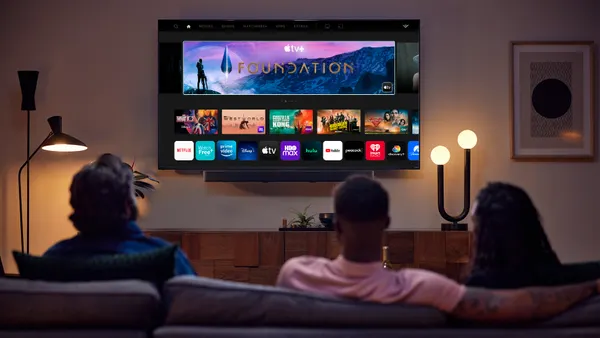Dive Brief:
- Procter & Gamble will further consolidate and upgrade its agency capabilities, news revealed in a conference call with analysts for its Q2 earnings report for the 2018 fiscal year and in a company press release. P&G had previously reduced the number of agencies it uses by 60%, saving $750 million in agency and production costs and improving cash flow by more than $400 million, the company said.
- P&G Chief Financial Officer Jon Moeller said the number of agencies the company works with will be reduced by another 50%, ultimately saving $400 million through the implementation of new advertising and media agency models. The new models include fixed and flow arrangements, open sourcing of creative talent and production, and driving local relevance, speed and quality. The company also plans to automate more of its media planning, buying and distribution by bringing more of it in house.
- The earnings report also highlighted the impact of the company’s price cuts across multiple product lines, which led to increased sales. Moeller said the discounts wouldn’t be permanent and were a response to industry trends, discounts by rivals and the spread of cheaper private-label products.
Dive Insight:
P&G has expressed its commitment to higher-quality content and more transparency. In the Q2 earnings report, company CFO Jon Moeller said transparency continues to improve, and this has created opportunities for P&G to eliminate waste by reducing excessive ad frequency both within and across channels, getting rid of ads that aren’t viewable, stopping ad delivery to bots and taking control over ad placement to ensure they aren’t placed near inappropriate content. These strategies have increased customer reach by about 10%, Moeller said.
Bringing more agency functions in house is an attempt by P&G to save money while also driving more engagement by giving the company more control over its campaigns and the ability to better measure results and ROI on campaign spend. The challenge for big companies is finding the right balance of in-house work and agency partnerships. Too much of the former can result in creative that reflect's insular groupthink rather than something that will resonate with consumers. This was supposedly one of the factors that contributed to Pepsi's big fail last year with a Kendall Jenner ad that was the focus of a backlash for its tone-deaf messaging around social protests.
Several other big companies are also rethinking their marketing structure, reflecting ongoing attempts to be more nimble as digital's role grows as well as marketing's increasing overall contribution to driving revenue growth. Hyatt recently announced plans to cut its global CMO position, and Coca-Cola eliminated its global CMO and combined marketing, customer and commercial leadership into one function.
In Q2 of the 2018 fiscal year, P&G reported net sales of $17.4 billion, a 3% increase over the previous year. Organic sales increased 2%. P&G has been under pressure to increase sales as it faces competition from retailers like Walmart and Amazon that are pushing store brands and lower prices. This led P&G to discount products across brands, which resulted in the lowest average prices since 2011. Going forward, Moeller said P&G will offer new products and focus on the higher end of the mark












